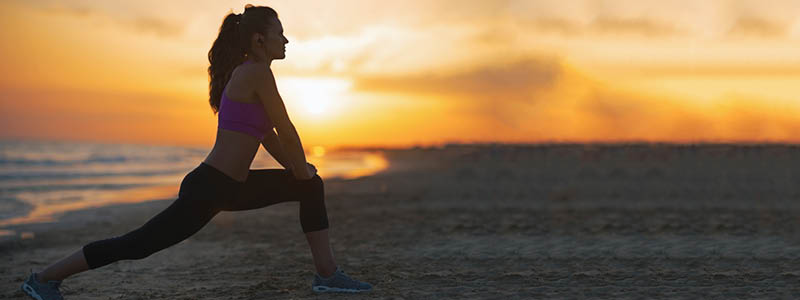The Fresh Blog
Lifestyle, Health, Nutrition & Inspiration from Luvo
To Stretch or Not to Stretch?
While the jury’s still out on whether or not stretching helps improve your performance or prevent injuries and muscle soreness, there’s no doubt that it feels pretty darn good. It can certainly help you ease into your workout and wind down when you’re done, and it also improves your flexibility. So how are you supposed to stretch? When is the best time to stretch and what kind of stretches should you be doing?
If you’re not a pro athlete and just want to incorporate some stretching into your workout routine, you’ll likely be doing two types of stretches – one before you start working out and one after.
Before You Work Out: Dynamic Stretching
Dynamic stretching is the kind most often performed before your workout, and involves moving your muscles rather than holding a stretch for a set amount of time. It helps increase your range of movement and also blood and oxygen flow to your soft tissue to prepare them for exercise.
What kind of movements should you be doing in a dynamic stretch? They should mimic the kind of movements you will be doing during your workout. So if you’re going to be doing some kickboxing to YouTube videos in your living room (my favorite!), try repeating some movements that get your shoulders, hips and knees warmed up for some intense kicking and punching. If you’re unsure about the kind of stretches you should do, try a quick internet search for dynamic stretches that match your workout of choice.
After You Work Out: Static Stretching
Static stretching is usually performed after you work out and involves holding positions that elongate your muscles until you feel a warm or slightly uncomfortable sensation. This type of stretching helps lengthen your muscles, improves flexibility and counteracts the repetitive movements of exercise. It’s also a great way to cool down and relax after a long, hard workout!
You don’t have to reserve your static stretches just for after you work out; you can do them at any time as a way to relieve stress and muscle tension.
Static stretches should be held for a minimum of 30 seconds. Make sure you breathe normally during your stretches and don’t stretch too far! You should be able to feel the stretch but it should not be painful.
Which static stretches should you do? Make sure you’re stretching the muscles you’ve used most, or if you’re not working out, just stretch the ones that feel tense!
Stretch Responsibly
Just like any physical activity, you should take extra care when stretching so you don’t injure yourself. Don’t stretch your muscles too far, remember to breathe, and when in doubt, consult trained fitness professionals for safe stretching tips.


